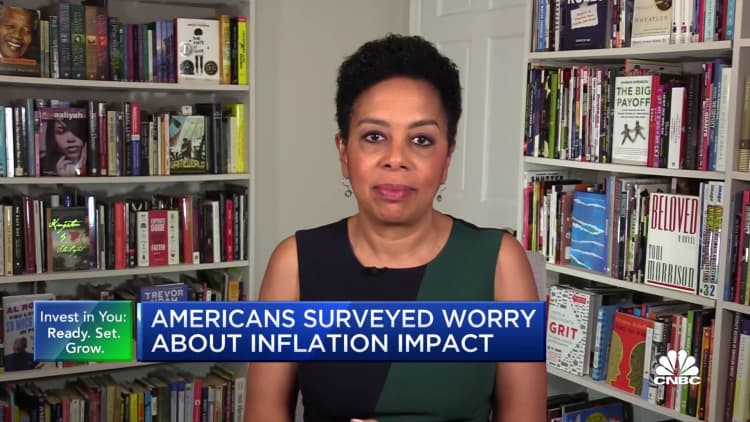About 7.7 million Americans count on monthly government checks through a program for low-income seniors or people with disabilities.
Supplemental Security Income, or SSI, as it's known, provided an average benefit of $569 per month as of November.
One big change — updating the program's rules around income from work — could help improve those beneficiaries' standard of living, according to a report from the Urban Institute.
The maximum SSI benefit in 2022 is $841 per month, up from $794 in 2021.
Still, most SSI beneficiaries are within 150% of the federal poverty level, according to the Urban Institute. For a family of one, that's $1,147 per month in 2022.
More from Personal Finance:
Why experts say Social Security's retirement age could move higher
States put unemployment insurance on chopping block
How to plan your visit as Social Security offices reopen
In addition, many people who receive SSI benefits are unable to work. Only a small percentage of recipients of those government checks are employed at any given time, according to the research.
And when they do work, they are held to strict rules around how much they can make.
Beneficiaries can have up to $20 in unearned income per month, and their first $65 in earnings are exempt from the program's rules. But beyond that threshold, their SSI benefits will be reduced by 50 cents for every dollar of income.
If that sounds low, that is because those thresholds have been unchanged since Congress created the program in 1972.
At the time, it was not common to index benefits to inflation. Social Security disability and retirement benefits had just started to be adjusted for those annual changes.

However, if SSI's income thresholds had been set to grow with inflation from the beginning, they would be more than five times larger today, according to the Urban Institute.
The general income threshold would be $128, up from $20. Moreover, the earned income threshold would be $416 per month, rather than $65.
Moving the $65 earned income threshold to the fully indexed level would cost the government about $1.1 billion per year, according to the report. In 2019, the government spent $56 billion to provide SSI benefits to 7.9 million beneficiaries.
Some of those SSI beneficiaries also collect disability benefits through Social Security. However, their income is still subject to those SSI rules.
Any changes to the income rules would be targeted to people who are trying to work and are very poor, said Jack Smalligan, senior policy fellow at the Urban Institute.
It could enable SSI beneficiaries who can work to still keep their benefits and help push their income above the poverty level.
"That just kind of feels like a win-win for both the economy and for the individual," Smalligan said.
The research points to the possibility for part-time work when possible. It is not arguing for beneficiaries to do enough work to leave the program, Smalligan said.
To be sure, there are other reforms that could update the SSI program and improve the quality of life of its beneficiaries, Smalligan said.
That includes a $2,000 limit on assets individuals can have. That amount has not been updated since 1989. The limit for married couples is $3,000.
The Supplemental Security Income Restoration Act, which was introduced by Sen. Sherrod Brown, D-Ohio, last year, proposed changes to both the income and asset restrictions. It also sought to bring the monthly benefit up to 100% of the federal poverty level and index them to inflation.
While lawmakers pushed to include changes to the SSI program in Democrats' Build Back Better package that was up for consideration earlier this year, that legislation has since stalled.


